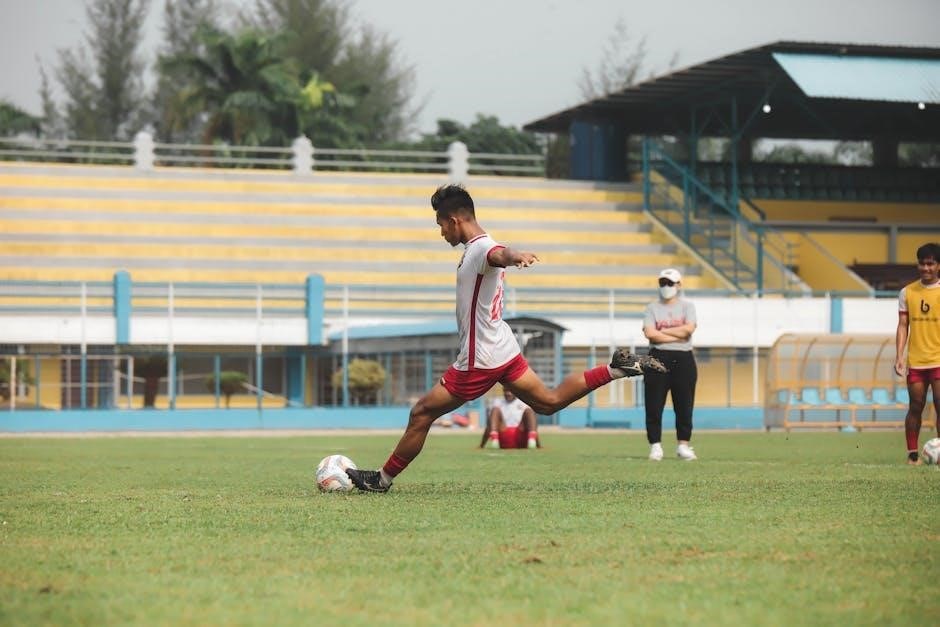The Melnor Water Timer is a top choice for gardeners, offering easy, efficient, and customizable watering solutions. With models like the HydroLogic series, it caters to diverse irrigation needs, ensuring optimal water usage and plant care through advanced features like rain delay and moisture sensors, making it a versatile and reliable tool for modern gardening.
Overview of Melnor Water Timer Models
Melnor offers a range of water timer models to suit different gardening needs. The HydroLogic 2 Zone Water Timer is ideal for sprinkler systems, allowing up to 4 cycles per zone. The 4 Station Water Timer provides flexibility for larger irrigation setups. Bluetooth-enabled models, like the 93015 and 93100, offer app control for convenient scheduling. The AquaTimer Two Zone Electronic Water Timer is another popular option, featuring simple dial controls. Each model is designed for ease of use and efficient watering, catering to both small gardens and complex landscaping systems with advanced features like 12-hour mode and battery-powered operation.
Importance of Proper Setup and Programming
Proper setup and programming of your Melnor Water Timer are crucial for efficient watering and plant health. Correct installation ensures accurate water delivery, while programming tailors schedules to specific plant needs. Misconfiguration can lead to overwatering or underwatering, affecting growth and wasting resources. By following instructions to set days, start times, and durations, you optimize watering cycles, ensuring plants receive the right amount of moisture when needed. This setup also helps conserve water and reduces maintenance, making it essential for effective garden management and long-term system functionality.

Installation and Setup
Melnor Water Timer installation involves unboxing, connecting to hoses, and attaching to sprinkler systems; Proper setup ensures smooth operation and precise watering control for your garden needs.
Unboxing and Initial Preparation
Begin by carefully unboxing the Melnor Water Timer and its accessories. Ensure all components, such as the timer, manual, and connecting hoses, are included. Read the manual thoroughly to familiarize yourself with the device’s features and operation. Before setup, install two AA alkaline batteries, avoiding rechargeable ones. Prepare the area by ensuring the faucet and sprinkler system are clean and functional. Lay out the hoses and connectors to streamline the connection process. Proper preparation ensures a smooth and efficient setup experience.
Connecting the Timer to the Hose and Faucet
Attach the timer to your faucet by screwing it securely into place. Ensure a tight seal to prevent leaks. Next, connect one end of the hose to the timer’s inlet and the other to the sprinkler or soaker hose outlet. For models with multiple zones, connect each zone’s hose to the corresponding timer port. Double-check all connections for tightness. Turn the water supply on slowly to test for leaks. Proper connections ensure reliable operation and prevent water waste during irrigation cycles.
Attaching the Timer to the Sprinkler System
Connect the timer to your sprinkler system by attaching the outlet hose to the sprinkler inlet. Ensure the connection is secure to avoid leaks. For multiple zones, assign each zone to the timer’s designated ports. If using a soaker hose, attach it directly to the timer’s outlet. Tighten all connections firmly. Once attached, test the system by running a manual cycle to ensure proper water flow and functionality across all zones. This setup ensures efficient and automated irrigation tailored to your lawn’s needs.
Setting the Clock and Initial Timer Mode
Start by setting the clock in the 12-hour format (AM/PM). Use the cursor or +/- buttons to adjust the time. Once set, select the initial timer mode, choosing between “Auto” or “Manual.” In “Auto,” the timer follows programmed schedules, while “Manual” allows on-demand watering. Ensure the time is accurate to align watering cycles with your schedule. The default mode is typically “Auto,” but you can switch as needed. Proper clock setup ensures precise watering operations and optimal irrigation management for your lawn or garden. This step is crucial for efficient and timed water distribution.
Programming the Water Timer
Program your Melnor Water Timer by selecting watering days, start times, and durations. Use the +/- buttons to customize cycles, ensuring efficient irrigation tailored to your garden’s needs.
Setting Watering Days and Start Time
Start by selecting the desired watering days using the +/- buttons. Choose from options like “Every Day,” “Odd,” or “Even” days, or specific days of the week. Next, set the start time by pressing the “Start Water” button and adjusting the time using the +/- buttons. Ensure the time is in 12-hour format (AM/PM). Press “OK” to confirm your settings. The timer will now activate watering at the selected time on the chosen days. Always verify the clock is correctly set for accurate operation. This feature ensures your plants receive water consistently, promoting healthy growth.
Adjusting Watering Duration and Frequency
To customize your watering schedule, adjust the duration by pressing the “How Long” button and using the +/- buttons to set the desired watering time, up to 2 hours. For frequency, press the “How Often” button and select from options like “Once” or “Twice a Day.” Use the +/- buttons to choose the interval between cycles. Press “OK” to save your settings. This feature allows you to tailor watering to your plants’ needs, ensuring consistent moisture levels while preventing overwatering. Adjustments can be made at any time for optimal results.
Understanding AM/PM and 12-Hour Format
The Melnor Water Timer operates on a 12-hour clock with AM/PM settings. To ensure accurate watering schedules, the timer displays AM or PM next to the time. When setting the start time, confirm the correct period (AM/PM) by checking the display. For example, 8:00 AM is morning, and 8:00 PM is evening. This format helps prevent scheduling errors and ensures your irrigation runs at the desired times. Properly setting AM/PM is crucial for maintaining consistent watering schedules and optimizing plant health.
Saving and Reviewing Programming Settings
After programming your Melnor Water Timer, press the OK button to save your settings. This ensures your watering schedule is stored and active. To review, navigate through the menu using the + or ⏤ buttons, checking each setting like watering days, start times, and durations. The timer’s display will show the current settings, allowing you to verify or adjust as needed. Regularly reviewing ensures accuracy and prevents issues like overwatering or missed cycles, keeping your irrigation schedule reliable and efficient for optimal plant care.

Manual Watering Options
The Melnor Water Timer offers convenient manual watering options, allowing you to override programmed settings. Use the manual watering button to activate water flow instantly, ensuring plants receive water when needed, without altering the preset schedule. This feature is ideal for unexpected watering needs or testing the system. Simply press the button, and the timer will run until manually turned off, providing flexibility and control over your irrigation system.
Activating Manual Watering Mode
To activate manual watering mode on your Melnor Water Timer, locate the designated Manual Watering Button on the control panel. Press and hold this button until the display indicates that manual mode is active. Once activated, water will flow through the connected hose or sprinkler system immediately. This mode bypasses all programmed schedules, allowing for instant irrigation. Note that manual mode will remain active until you manually turn it off or the timer resets to its programmed settings. This feature is particularly useful for quick, unexpected watering tasks or system testing.
Using the Manual Watering Button
The manual watering button on your Melnor Water Timer allows for instant irrigation without altering scheduled programs. To use it, press and hold the button until the display shows “MAN” or “Manual.” Water will begin flowing immediately. The timer may have a default duration, such as 10 minutes, after which it will automatically turn off. You can adjust the watering time using the plus or minus buttons before pressing the manual button. Once done, the timer reverts to its scheduled programming, ensuring uninterrupted automatic watering. This feature is ideal for quick watering tasks or system checks, providing flexibility without affecting your set schedule. Always ensure the button is pressed intentionally to avoid accidental activation and monitor battery life, as frequent use may drain batteries faster. For further details, consult your user manual or explore troubleshooting guides online.

Rain Delay and Moisture Sensor Features
The Melnor Water Timer includes a rain delay feature that pauses watering during rain or when soil moisture is sufficient, optimizing water efficiency and preventing overwatering.
Enabling Rain Delay Function
The rain delay feature on Melnor Water Timers prevents unnecessary watering during rain or when soil moisture is adequate. To enable it, press and hold the Manual Watering Button until “RAIN DELAY” appears on the display. Use the /- buttons to set the delay duration (up to 7 days). The timer will automatically pause watering during this period. This feature ensures water conservation and protects plants from overwatering. The delay will expire after the set time, resuming your programmed watering schedule. This function is ideal for maintaining healthy soil moisture levels and root health.
Understanding Soil Moisture Monitoring
Melnor Water Timers equipped with soil moisture sensors monitor ground conditions to optimize watering. The sensor detects moisture levels and automatically suspends irrigation when the soil is already wet, preventing overwatering. This feature promotes healthy root growth and reduces water waste. The sensor is easy to install and integrates seamlessly with the timer, ensuring your lawn or garden receives the right amount of water without manual intervention. It’s an eco-friendly solution that enhances plant health and conserves resources effectively.
Maintenance and Troubleshooting
Maintaining your Melnor Water Timer involves regular battery checks and cleaning. Troubleshooting common issues like faulty sensors or connectivity problems can be resolved by resetting the timer or replacing worn parts, ensuring optimal performance and longevity of the device.
Battery Replacement and Care
To maintain your Melnor Water Timer, remove the battery holder from the back and insert two AA alkaline batteries, avoiding rechargeable types. Regularly clean the terminals to ensure proper function. Replace batteries annually or when the indicator shows low power. During winter, remove batteries to prevent damage from freezing temperatures. Store them in a cool, dry place to preserve their lifespan. Proper battery care ensures consistent performance and prevents unexpected malfunctions, keeping your timer reliable for seasonal use.
Winterizing your Melnor Water Timer is essential to protect it from cold weather damage. Drain all water from the timer and connected hoses to prevent freezing. Disconnect the timer from the faucet and sprinkler system, then store the hoses in a dry place. Remove batteries to avoid corrosion and store the timer in a cool, moisture-free area, such as a shed or indoors. This ensures proper function when you reactivate it in warmer months, maintaining its longevity and performance for future use.

Troubleshooting Common Issues
Winterizing the Timer for Cold Weather
Winterizing your Melnor Water Timer is crucial to prevent damage from freezing temperatures. Drain all water from the timer and hoses to avoid ice formation. Disconnect the timer from the faucet and sprinkler system, then store the hoses in a dry, protected area. Remove the batteries to prevent corrosion and store the timer in a cool, moisture-free location, such as a garage or indoors. Proper winterization ensures the timer remains functional and ready for use when warmer weather returns, safeguarding your investment and maintaining optimal performance.
Resolving Timer Malfunctions
If your Melnor Water Timer malfunctions, start by checking the power source. Ensure batteries are installed correctly and not depleted. If the timer fails to activate, verify the programming settings. Check for any blockages in the hose or sprinkler connections. If the timer’s display is unresponsive, reset it by removing the batteries and reinserting them. For soil moisture sensor issues, clean the sensor and ensure proper calibration. Regular maintenance and troubleshooting can resolve most issues, ensuring your timer operates efficiently and effectively for optimal watering schedules.